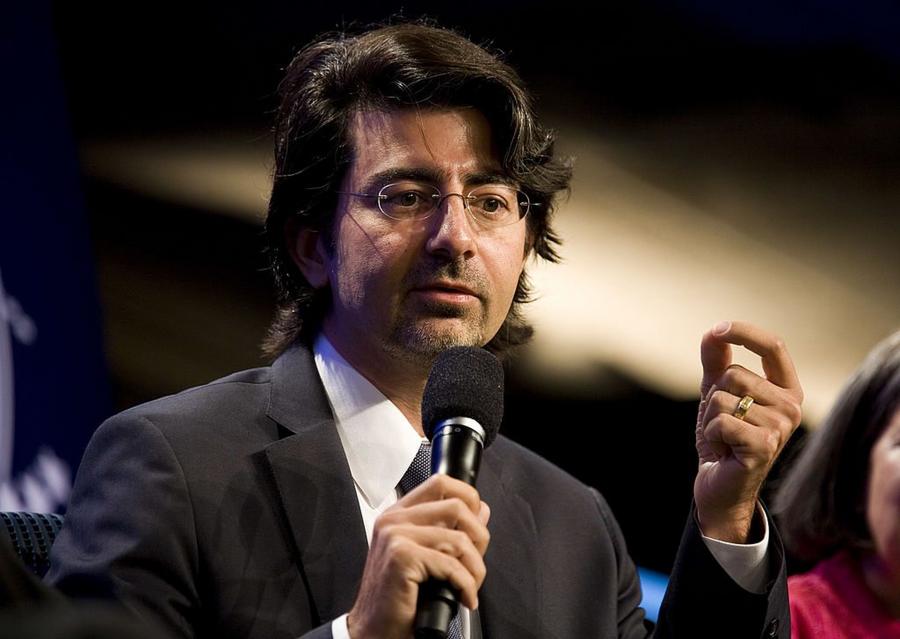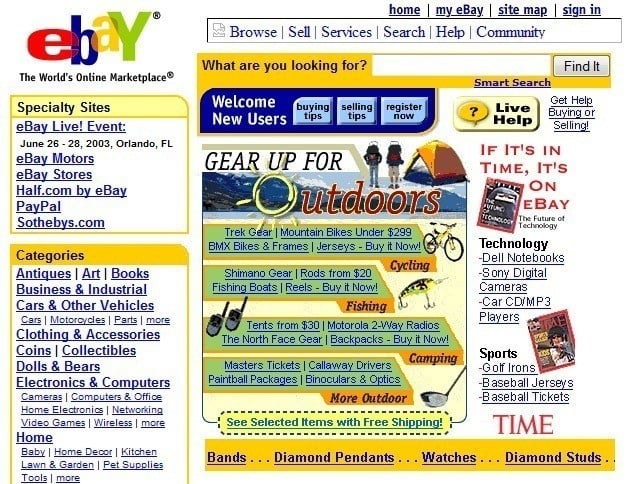Over the years, we here at Celebrity Net Worth have posted dozens of stories about people getting insanely wealthy overnight from a business that took years to nurture and develop. The most recent example is the text messaging service Whatsapp. The founders of Whatsapp poured their blood, sweat and tears into their company. They faced huge risks and massive obstacles at every turn. But it all paid off on February 19, 2014, when Facebook agreed to buy their company for $19 billion. Can you imagine the joy and elation the company founders must have felt? One founder was instantly worth $3.8 billion, the other was instantly worth $8.55 billion. That's pure insanity! What makes this victory especially sweet is the fact that for every Whatsapp, there are thousands, potentially tens of thousands, of similar ideas that never even got off the ground or failed after a year or two. Anyone who successfully builds a company from scratch then sells it for billions of dollars is truly special. That's what makes the story of eBay founder Pierre Omidyar so unique and worth telling. Pierre Omidyar overcame incredible odds to build eBay from nothing into a company that changed the face of electronic commerce forever. He became an instant multi-billionaire when eBay went public in September 1998. So what's special about Pierre Omidyar? Almost as soon as he became a billionaire, he decided to give it all away.

Pierre Omidyar /Brian Harkin/Getty Images
Pierre Omidyar was born on June 21, 1967, in Paris, France. His parents were Iranian immigrants who moved to France to attend university. His mother eventually earned a doctorate in linguistics and the world-renowned Sorbonne. His father became a surgeon. The family emigrated to the United States when Pierre was six years old and he grew up middle class in Washington, DC. Even as a very young child, Pierre showed a very early aptitude and passion for computers. He graduated from St. Andrew's Episcopal School in Potomac, Maryland in 1984 then went on to Tufts University in Boston where he earned a BS in Computer Science. While at Tufts, Pierre also met his future wife, Pamela, a native of Hawaii. After graduation in 1988, the couple moved to California where Pierre started and sold a small computer company.
After selling that company, Pierre spent some time trying to figure out what to do next with his life. According to legend, his wife Pamela Omidyar owned an extensive collection of Pez candy dispensers. Pamela frequently complained to Pierre about how difficult it was to buy and sell dispensers. If only there was a way to use this newfangled "internet" to match buyers and sellers of collectible products. This is how eBay was born. The company's first iteration was launched on September 3, 1995 and it was actually called "Auction Web". After just a few days being live, Pierre was shocked to see that a broken laser pointer that he put up for auction as a test, had actually sold for $14.83. Stunned, Pierre actually reached out to the buyer to explain that double check that he was aware that the laser pointer was broken. The buyer responded "I'm a collector of broken laser pointers". As a side note, it turns out that the whole Pez Dispenser legend was mostly made up by an early PR person.
In September 1997, the company officially decided to switch from using the name AuctionWeb to eBay. The name eBay came from Omidyar's consulting firm Echo Bay Technology Group. Pierre originally wanted to use the domain name echobay.com but that site was already being used for by a company that mined for gold, silver and copper in the Northwest. So Omidyar settled on the shortened eBay.com.

eBay in 1998
Over the next year, eBay went on a tear. Within a few months, eBay was hosting millions of auctions every month. Soon it was hosting 800,000 new auctions every day. By comparison, eBay hosted fewer than 250,000 auctions during the entire previous year. eBay went public on September 21, 1998. Pierre Omidyar and the company's first employee Jeff Skoll became multi-billionaires overnight. The company was expected to go public at $18 a share, but at the end of the first day of trading topped $53.50. Pierre's 178 million shares were worth $9.4 billion. He was 31 years old.
Now if you or I suddenly found ourselves with seven or nine billion dollars in the bank, we might be tempted to go spend some of it. That Paris apartment you've always wanted? No problem! In fact, you might as well pick up a Hawaiian beach house to go with it, and how about a little cottage in Malibu while you're at it? But not Omidyar. He was never even the tiniest bit tempted to go on a spending spree with his newly acquired fortune. Omidyar realized, that, since he could buy ALL of the expensive cars, he didn't actually want any of them. Amazingly, Pierre decided right then and there that he was going to spend the rest of his life giving 99% of the fortune away.
What inspired Pierre Omidyar to give away billions of dollars? The eBay users themselves. As he saw his brainchild grow beyond even his wildest dreams, Omidyar was struck by how much integrity eBay users had. The vast majority of eBay users were trading goods and services with strangers and treating them with respect. He saw a sense of values in his site's user base that you don't always see in real life. He was impressed with the sense of community on eBay. In creating eBay, Omidyar gave people a platform to create their own businesses. He gave all of us a place to become entrepreneurs and run our own retail shops. It drove Omidyar to want to do more with his accidental fortune. Omidyar was struck with another idea: He could apply that same concept to charitable giving.
Pierre and Pam Omidyar have struggled with the concept of their wealth since eBay's IPO nearly 15 years ago. They worried about how it might affect any children they may have in the future. Omidyar acknowledged that you either get rid of every last dime before your child turns four, or you accept that they will grow up with an entirely different set of values than their parents.
Pierre Omidyar founded the Omidyar Network in 2004 based on the belief that every person has the potential to make a difference. The philanthropic investment firm is dedicated to harnessing the power of markets to create ways for people to improve their lives and their communities. To date, Omidyar Network has committed more than $375 million to for-profit companies and nonprofit organizations that foster economic advancement and encourage individual participation across multiple investment areas, including property rights, government transparency, and social media. The Omidyar Network coined the concept of venture philanthropy. The Omidyars targeted causes are: Education and science for Pierre. Fighting childhood cancer and protecting the environment for Pamela.
The Omidyars have a different philosophy when it comes to the Network's giving. They don't invest in short-term goals, rather they seek to rebuild the lost sense of community that will is needed to fix goals like feeding the hungry, teaching the illiterate, and sheltering battered women.
In 2010, Bill Gates and Warren Buffet approached Pamela and Pierre about joining their Giving Pledge where billionaires agree to give away at least half of their fortune to charity upon death. Gates and Buffet were about 10 years too late, as the Omidyars are on record as far back as 2000 about their desire to give away not just half but 99% of their fortune to charitable causes.
As of February 2014, Pierre Omidyar still has $8.3 billion left in the bank waiting to be given away. Omidyar's personal financial advisor is tasked with managing the entrepreneur's enormous fortune with the edict that he must not grow the fortune. That means the money doesn't really grow but, at the same time, the fortune will also never go down in a bad economy. Pierre Omidyar has vowed that by 2020, when he will be 52 years old, he will have given away all but 1% of his fortune. Incredibly, if he didn't have to worry about it hurting eBay's stock (he owns 28%) with a massive selloff, he'd give it all away sooner.
/2020/02/GettyImages-104380981-scaled.jpg)
/2021/09/pierre.jpg)
/2019/02/GettyImages-104380981-e1551292116552.jpg)
/2013/10/jeff-skoll.jpg)
/2010/07/Jeffrey-Skoll.jpg)
/2015/12/GettyImages-495431362.jpg)
/2009/09/George-Foreman.jpg)
/2009/12/Joan-Rivers.jpg)
/2019/04/Kathy-Griffin.jpg)
:strip_exif()/2020/06/taylor.png)
/2023/08/richard-dawson.png)
/2017/09/gr2.png)
/2022/10/jerry-van-dyke.jpg)
/2012/10/LEON-SPINKS-1.jpg)
/2021/08/Joan-Cusack.jpg)
/2015/02/dd.jpg)
/2009/12/Mario-Lopez-1.jpg)
/2025/01/Rashaun-Williams-copy-1.jpeg)
/2021/07/Joe-Frazier.jpg)
/2011/06/Phyllis-Diller-e1486738046954.jpg)
/2012/11/GettyImages-470080838.jpg)
/2020/11/Yella-Beezy.jpg)
/2018/10/Marshmello.jpg)